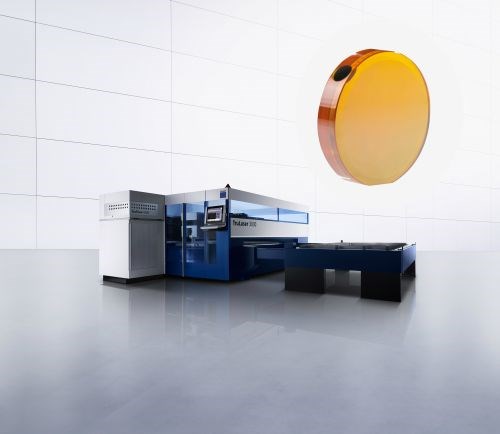An Eye on the Inside
There are myriad applications for RFID technology. This article shows an atypical one—how it’s used to monitor the degree of contamination on a laser cutter lens so an operator doesn’t have to.
Share







The lens shown in the upper right corner of the image has an RFID tag for monitoring and sending data to the operator of the TruLaser 3030 laser cutting machine seen below.
Radio frequency identification, or RFID, tags are tiny wireless devices that work like smarter UPC barcodes. Like a barcode, an RFID tag records information about a product or other item to which it is attached. However, unlike a barcode, the RFID tag can track information about its subject over time and does not need to be scanned to be read—it can send its data wirelessly to a reader via radio waves.
The applications for manufacturing are endless—process traceability, tool use monitoring and more. Here’s another: ’s TruLaser 3000 series laser cutting machines now feature an RFID-equipped lens to record important maintenance information. The RFID chip monitors the lens’s degree of contamination and tracks when it is cleaned. Having this information on hand means that operators only intervene when needed and visual inspections of the lens aren’t necessary. According to Trumpf, leveraging the RFID technology can reduce cleaning times by as much as 40 percent.
Related Content
-
3 Lessons Job Shops Can Learn From Laser Cutters
This laser-cutting “job shop” designs its processes to make high-mix, low volume work profitable.
-
Hamar Laser Instruments Surface Plate Calibration System Increases Repeatability
IMTS 2024: Hamar Laser Instruments introduces the L-703SP surface plate calibration system, intended to reduce time for surface plate calibration by 30 to 60%.
-
Muratec Hybrid Machine Combines Punch Press, Fiber Laser
The MF3048HL combined punch press and fiber laser provides precise cutting, punching, tapping and forming operations on a diverse range of materials.
.jpg;width=70;height=70;mode=crop)











